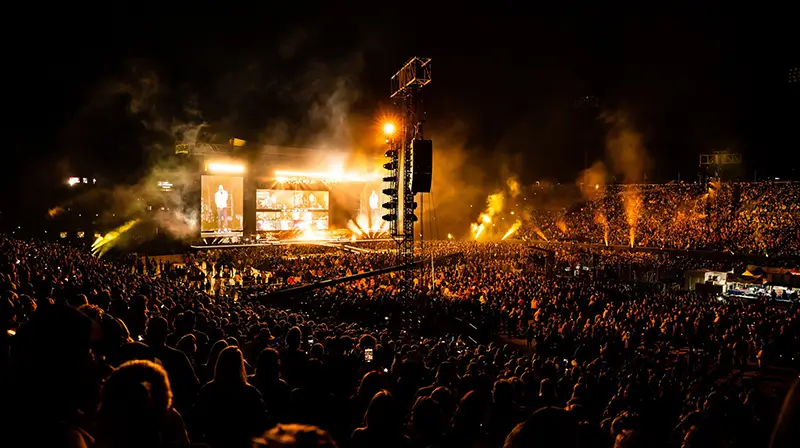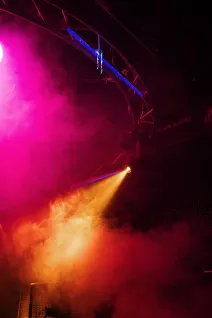Stage lights for theater, dance, musicals, concerts, weddings and other performances is an art in itself, of course, now more and more people are also using stage lighting in churches. If done well, it will improve audience performance. In order to operate the lights, you will need some prior training and practice to familiarize yourself with the technical aspects of stage lighting. However, there are some basic principles and concepts you need to follow to master the intricate art of stage lights and help bring any show to our grace life, able to be a professional stage lighting user.
Method 1: Decide what stage lights to use
Choose lights according to the type of performance. Every kind of show has some simple principles behind that type of lighting. Do some research to understand these principles to help you decide which stage lights to use for your upcoming performance.
Check the site to help determine how many stage lights you need, which fixtures to use, the size of the venue, and where you can put the stage lights. Check the position of the light bar to see where you can hang things. Evaluate whether you can place the stage light on a stand on the floor or install a vertical pipe and hang it from the side.

Use a fresnel spotlight to illuminate your subject and create strong shadows. Fresnel spotlights are softer than ERS (think those big spotlights you see at movie premieres). Scale up the Fresnel to a small diameter to create a spotlight, or scale it down to a large diameter to create an Ambilight. Igracelite’s led video lights have Fresnel, And some led spotlights also.
Use LED par floodlight, led par can, backstage lighting, or side lighting. Led par cans to produce narrow or wide elliptical beams. They are effortless to use and are a staple tool in many different types of performances, from backlighting for concerts to side lighting for dance performances.
Use strip lights, border lights, or floor lights to illuminate wide, flat areas. These are fixture types that contain multiple lights. Use them for basic lighting on backdrops, drapes, or above the stage. Such lights are generally called commercial lighting or civil lighting. They do not belong to stage lighting. Therefore, it is impossible to find professional stage lighting manufacturers to purchase related products.
Use the following point to follow the performer on stage. A follow spot is a bright moving spotlight that requires manual operation. Use them to follow soloists as they move around the stage. A well led follow spot will get twice the result with half the effort.
Ask what stage lights are in stock. Most venues have a base inventory of stage lights equipment from which you can choose your lights.
Method 2: Adjust the stage lights according to the show.
Consult the program director or person in charge. Discuss scripts, choreography, or concert types to collaborate and develop lighting designs to suit the show. Ask the director, choreographer, or band what they want the audience to see and focus on to determine how you will light the display.

Decide at what angle you need to place the light. Grab a small directional light, such as a strong flashlight, and see how lighting it from different directions on the stage can create different atmospheres. See how different angles will complement the performance, and consider when to use them during the performance.
Use stage lights to help you create a mood and atmosphere. Use dark blue for nighttime scenes and yellow for warm sunny scenes. Use crazy color combinations at concerts to create exciting moments. Take everything you’ve already considered and add some colored lighting into the mix to really make the show pop.
Method 3: Install stage lights

Make a 45-degree angle between the headlight and the main body left and right. Each subject you want to highlight will need two front lights, one in front of them on the left and one on the right, and at about a 45-degree angle to them. This is the standard 3-point lighting technique used by most gigs.
Turn on the backlight directly behind the subject at a 45-degree angle. This is the third light in the standard three-point system. Position the light directly behind the subject and at a downward angle of about 45 degrees.
Divide the stage into a grid and cover it with overlapping lights to form a washing effect. Divide the stage into regions approximately 8 ft (2.4 m) in diameter. You’ll need to cover each area with fixtures to create general lighting that illuminates the entire stage.
Draw the stage map and the location of the stage lights. Be sure to include the location of any fixed light bars you plan to use to hang lights in the diagram. Specify what stage lighting go where, where they will point, what color they will be, and any other relevant information.
Hang up the lights and plug them into the dimming rack. Dimmer racks allow you to smoothly fade lights in and out using a lighting table or console. if you do not have any experience, you will need training on how to use a lighting table or console. There are many types of stage lighting consoles, and the prices are also different. Of course, we should choose the one that suits us, and the one that suits us is the best.
Frequently Asked Questions
Where is the best place to buy stage lights?
When considering the optimal location for purchasing stage lights, numerous individuals instantly recall popular brands such as ADJ, Chauvet, Robe, and Martin. However, it is imperative to note that these well-known products are all manufactured in China. Grace Stage Lighting, specifically, has undertaken contract processing for both ADJ and Chauvet.
When it comes to purchasing stage lights, particularly Igracelite stage lights, China offers the most economical option. For those interested, our online store can be found at www.stagelightmall.com.
What is a typical dimmer for dimming stage lights?
A typical dimmer for dimming stage lights is a DMX dimmer, which is a device that controls the intensity of the light output. DMX dimmers are commonly used in professional stage lighting setups and can be controlled remotely using a lighting console or software. For example: Igracelite MA console, Igracelite Tiger console and other typical consoles, and then control software, Grace Stage Lighting has a control box, HD512, which covers and supports: lightjockey, MagicQ, FreeStyler, Sunlite, Daslight.
what are the two basic categories of stage lighting?
The two basic categories of stage lighting are general illumination and special effects lighting. General illumination provides overall lighting for the stage, while special effects lighting is used to create specific lighting effects and enhance the mood or atmosphere of a performance.
